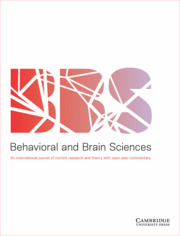Article contents
Life history and language: Selection in development
Published online by Cambridge University Press: 09 August 2006
Abstract:
Language, like other human traits, could only have evolved during one or more stages of development. We enlist the theoretical framework of human life history to account for certain aspects of linguistic evolution, with special reference to initial phases in the process. It is hypothesized that selection operated at several developmental stages, the earlier ones producing new behaviors that were reinforced by additional, and possibly more powerful, forms of selection during later stages, especially adolescence and early adulthood. Peer commentaries have provided opportunities to explain human life history more comprehensively, and to add details to our account of spoken language. We made no attempt to explain syntax in the target article, but we propose here that selection for vocal plumage may have increased our species capacity for utterance complexity, a development that would have benefited all levels of language.
Information
- Type
- Authors Response
- Information
- Copyright
- Copyright © Cambridge University Press 2006
References
- 8
- Cited by

